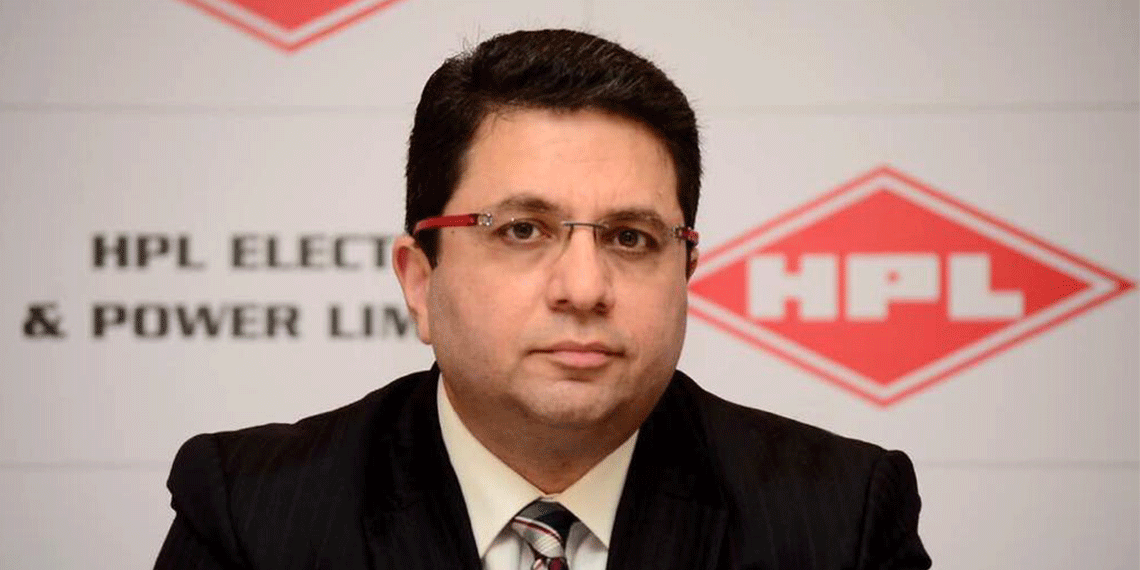By Gautam Seth, Joint Managing Director, HPL
Today, the electric manufacturing is one of the emerging industry in the country and across the globe. But the high demand of chip shortage is impacting the whole industry as the millions of products relay on computer chips also known as semiconductors. Be it cars, fridges, laptops, smartphones, TV etc. An electronic chip is also known as integrated circuit. It consists of transistors, resistors and diodes. This plate is made from semiconductor material. Chips have been around since the 20th century and with the advancement of modern technology, its demand is increasing. These are found in numerous everyday devices. Chips or semiconductors have the properties which lies between conductors and insulators and hence used to power a wide range of devices. It functions as powering displays and transferring data. And since the country is reporting the shortage of chip, it is bothering the auto sector. It has impacted on the sales of cars, laptops, TV and other electronic devices.
Why shortage?
Companies, which are manufacturing and selling smartphones, cars, laptops and other electronic devices will suffer the losses. And right now, there just aren’t enough of them to meet industry demand. As a result, many popular products are in short supply.
Established and luxury auto manufacturer have had to either slow or temporarily halt production at their factories. Smartphone makers are feeling the pinch too.
Even companies that wouldn’t necessarily be associated with computer chips haven’t been spared. Some shoppers have already noticed these problems. Sales of used-cars are up, for instance, because new vehicles, often packed with thousands of individual chips, are in short supply.
A major key reasons behind the global chip shortage are supply chain disruptions due to the pandemic, a sharp rise in demand for electronic goods as more people are now working from home and lack of investment in chip building capacities.
Impact of shortage:
As it’s high time of the festive season, it will affect the Indian business. Shortage of chip has resulted in delay of goods delivery. The scarcity has repercussions at multiple levels in any industry that employs chips, but the final impact is felt by the user, as producers pass on the cost pressure. For the previous three to four months, laptop costs in India have climbed by 2% to 3% every month. Choose from a variety of smartphone models from various manufacturers. The majority of chips have increased in price by 15 to 20%, whereas the more modern memory and storage chips have increased by four times. Laptops, personal computers, and televisions are likely to be impacted over a longer period of time. This is due to the fact that manufacturers are confronting not only a chip shortage, but also a silicon shortage.
The Covid-19 pandemic and the resulting lockdowns were the key factors that hampered chip production. Other factors, however, have hampered the production and delivery of these miniature power plants. A fire at a factory in Japan in July 2020, followed by a fire at a semiconductor plant belonging to sensing in Japan in October 2020, disrupted supplies.
A shortage of containers, big boxes used to store and move things via sea, a significant form of global transportation, is another element contributing to the crisis.
With demand on the upswing and supply likely to remain tight, the scarcity is predicted to endure until 2022 or 2023. Semiconductor supply was supposed to recover by the end of 2021, but analysts believe that the worldwide chip deficit would extend into next year and maybe into 2023. For a long period, the existing capacity investments will have little effect. The last quarter of 2021 could be a determining factor in how long the chip scarcity lasts. In Q4, demand tends to slow, which may allow suppliers to catch up on orders. Although the slowdown is unlikely to be severe enough to restore supply and demand balance, shortages will linger into the first half of 2022 if we muddle through. “Shortages might easily linger until the first half of 2023” if demand is higher than usual.
Another factor adding to the crisis is a shortage of containers, the large boxes that are used to store and transport items via sea, a major mode of global shipping.
Self-reliant will help to overcome
With a major shift and issues of chip shortage, it will be very difficult for manufacturers to get rid of it soon. But instead of relying on others we should start manufacturing the chips and invest in the particular sector under the initiative of make in India as soon possible. This step will not only help us to overcome on the shortage but also it will help to boost our economy and soon after we will be standing with other nations.
The chip scarcity has made one thing clear: managing change and remaining resilient requires a flexible, agile supply chain. Shortages of semiconductors have harmed automobile and other product makers. It’s possible that the global chip scarcity will endure until 2022. Begin with the automobile and transportation industries; the crisis has now moved to consumer electronics. Given the circumstances, waiting is something we all must do, but it is not a deliberate decision to keep your firm functioning smoothly until the crisis is over. The need of identifying and reducing supply chain risks, as well as building solid plans for surviving the next storm, has been highlighted by these shortages.








